84% of consumers will not return to shop from an online store after just one poor delivery experience. This is proof that visibility has become the make-or-break factor in last-mile logistics. However, many fleets still rely on static “Out for delivery” emails that tell customers, well, nothing.
This blog breaks down what last-mile carrier tracking is and how the right tools can improve both customer satisfaction and delivery operations. You'll also learn what to look for in a modern tracking solution, and how Onfleet helps you get it right from the start.
What is Last Mile Carrier Tracking?
Last-mile carrier tracking refers to the real-time status updates of a customer’s order during its final leg of delivery. It gives both customers and businesses visibility into the package’s location, estimated arrival time, and delivery status (from warehouse to doorstep).
As expectations for speed and transparency grow, last mile carriers are constantly looking for new ways to improve efficiency and shorten that last mile.
Five Key Challenges to Solving Last-Mile Visibility
If you’ve ever had a customer call asking, “Where’s my order?” and you couldn’t give a confident answer, you’re not alone. Visibility in the last mile is one of the toughest issues to solve in delivery logistics. Usually, the further that package gets from your central hub, the more complicated things tend to become. Here’s why:
1. Fragmented Systems
Many businesses rely on a different set of tools: one for dispatch, another for customer messaging, another for tracking. That kind of disconnected setup leaves plenty of blind spots. Without a unified platform, it’s hard to know where your drivers are, what they’re doing, or how to quickly communicate with customers.
2. Lack of Real-Time Data
Delayed updates are just as bad as no updates. If your system can’t track drivers and delivery statuses live, you’re always playing catch-up. And when customers see a vague “out for delivery” message for hours, it erodes trust.
3. Missed Communication Opportunities
Without built-in ways for drivers, dispatchers, and customers to connect, small hiccups can turn into major delays. Maybe the driver needs a gate code, or maybe the customer stepped out. These are solvable problems if your tech makes it easy to talk.
4. Inconsistent Proof of Delivery
A scribbled signature or a verbal “I dropped it off” is not enough. Especially in industries like pharmacy, food, or retail, you need hard proof: photos, barcodes, signatures, even one-time passcodes. Without it, you open the door to complaints and lost revenue.
5. High Driver Turnover
Last-mile delivery often sees a revolving door of drivers. If your system isn’t intuitive and mobile-friendly, training new drivers becomes a time-consuming job.
Solving last-mile visibility doesn’t mean layering more tools onto an already stretched team. It means picking the right solution that centralizes your operations instead.
What to Look for in a Last-Mile Deliver Tracking Platform
These features help you run a tighter, more reliable last-mile operation. When customers feel informed and in control, they’re far more likely to come back.
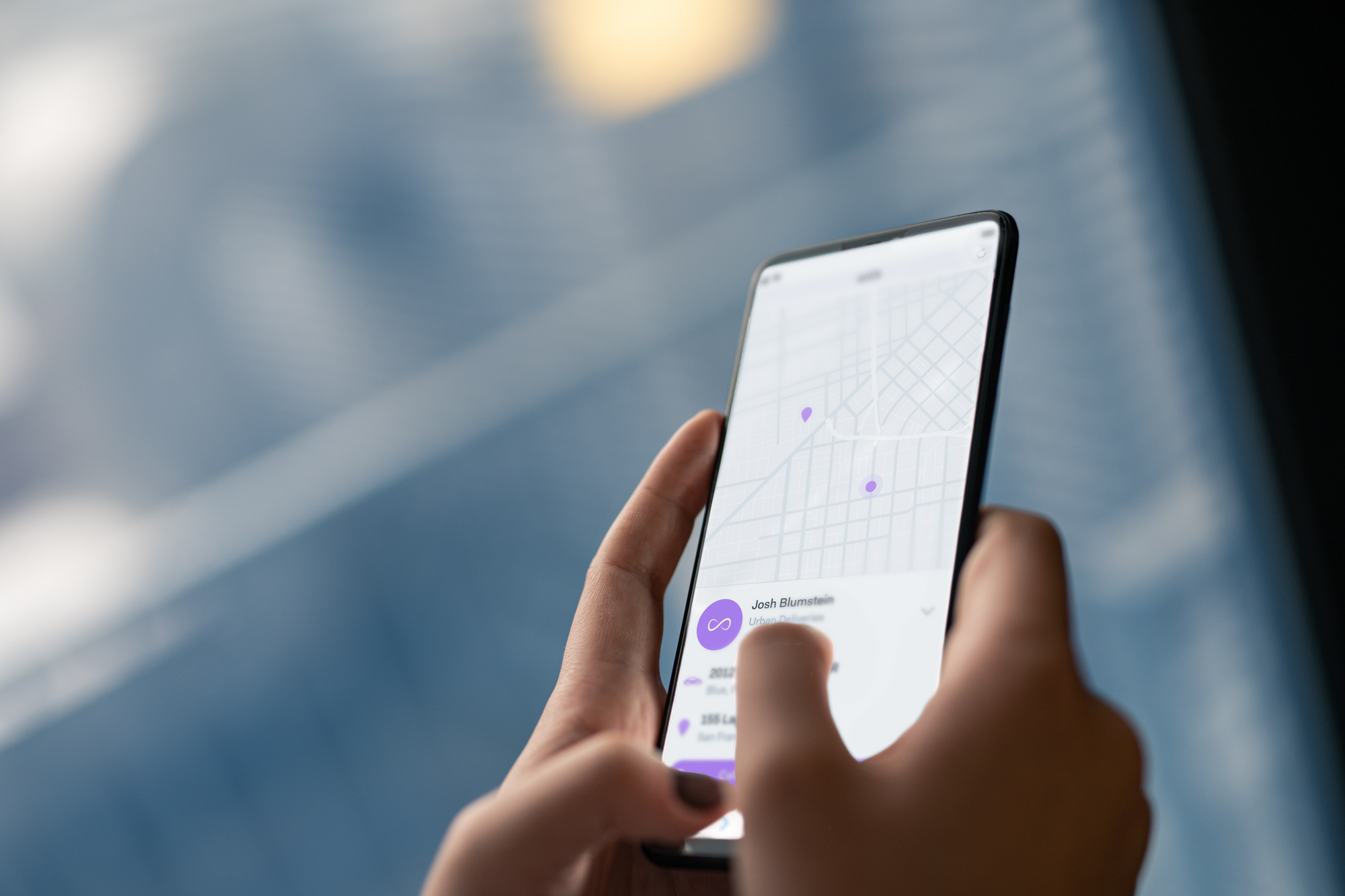
Real-Time Driver Tracking
Your tracking system should let you see exactly where drivers are at any moment. This is the baseline for visibility, both for your team and your customers.
Live ETAs and Customer Updates
It’s not enough to track orders internally. Look for software that sends predictive arrival times and real-time delivery updates via SMS or email, branded with your company’s name.
Two-Way Communication
When something changes (traffic delays, gate codes, delivery instructions), your drivers need an easy way to reach dispatch or the customer. Bonus points if your platform anonymizes numbers for privacy.
Proof of Delivery
Photos, signatures, barcodes, even one-time passcodes (OTPs), are must-haves to verify every handoff and reduce support tickets and loss claims.
Driver-Friendly Mobile App
Make sure your platform has an intuitive app that helps drivers stay focused and on task. It should show turn-by-turn directions, delivery details, and make confirming delivery fast and easy.
Analytics and Performance Data
You can’t improve what you can’t measure. The best tools give you data insights into driver performance, delivery times, failed drops, and customer feedback. This way you can spot trends and take immediate action.
Integration Flexibility
Your tracking software should plug into your existing systems, whether it’s a point of sale (POS), warehouse management system (WMS), or customer portal, without months of custom development work.
Carrier-Facing Benefits: Why Carriers Need Last-Mile Delivery Tracking Software
Carriers need to ensure their internal operations have full visibility throughout the supply chain, especially during the last mile.
1. Track Packages And Vehicles Once They are Loaded Onto Trucks
Once deliveries are out the door, real-time tracking keeps you in the loop. You can share live ETAs with customers, send instant updates if delays pop up, and keep everyone reassured that their package is on its way.
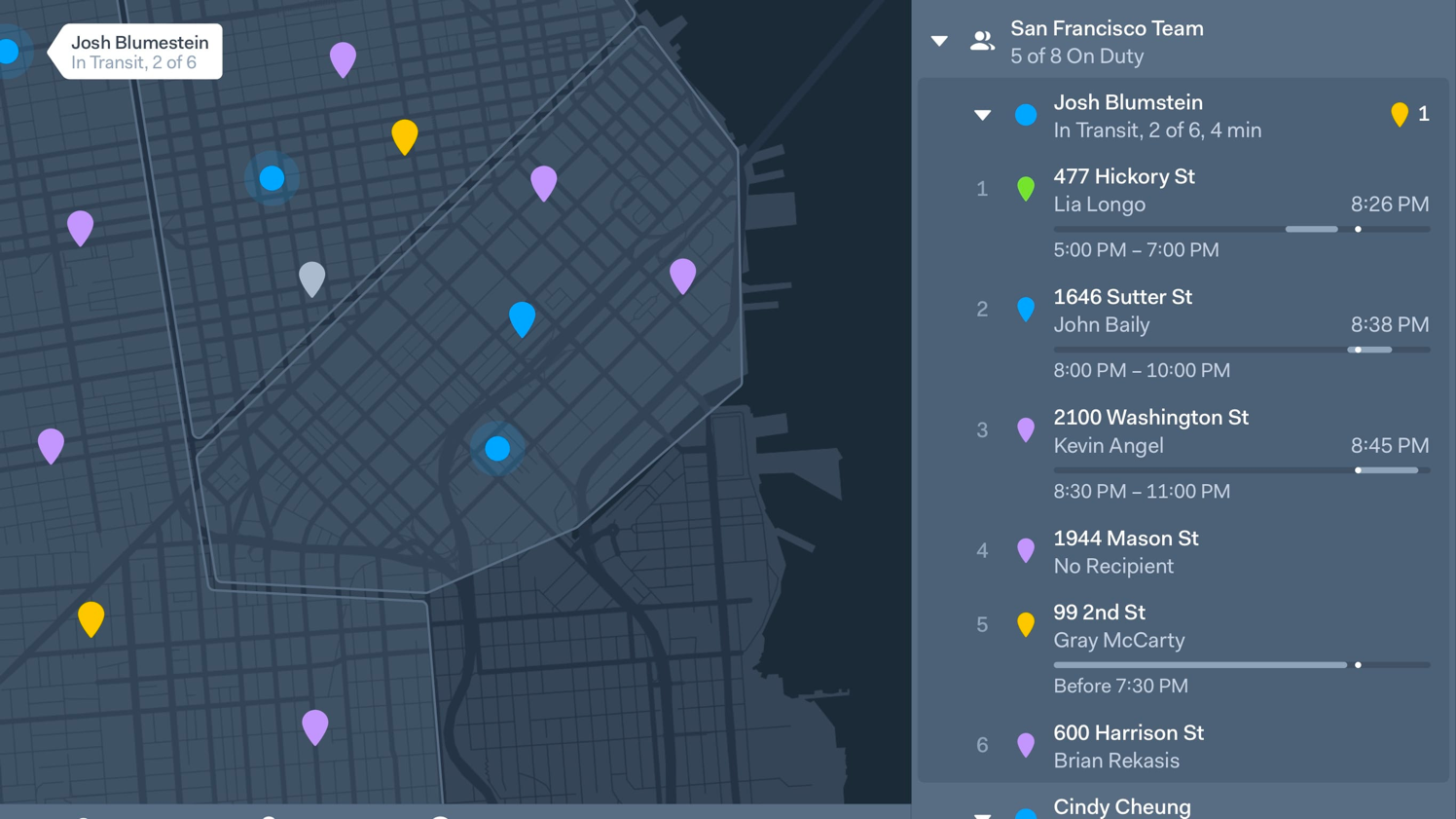
2. Obtain Optimized Route Suggestions
With the right software, your drivers don’t have to waste time figuring out where to go next. Routes are automatically optimized based on traffic, timing, and stop order. Every shift runs more efficiently, with less fuel and fewer delays.
3. Get Proof of Delivery At The Destination
Photos, signatures, barcodes, or notes, your drivers can collect it all through the driver app to confirm each drop. It gives your team a clear record of completed deliveries and reduces the need for back-and-forth with support when issues come up.

4. Offer Easy, Contactless Delivery
During the pandemic, a preference for "contactless signatures" emerged. Nowadays, some customers want to sign in person, others prefer zero contact. With contactless options like SMS signature links or digital confirmations, drivers can complete handoffs safely while still capturing verified confirmation for your records.
5. Obtain Key Delivery and Tracking Insights
Clearly view and analyze key performance indicators like success rates, feedback scores, distance traveled and more. Data can be segmented by teams, drivers, week, or even hour of the day and easily exported for record-keeping or sharing. You can then use this information to tweak your last mile delivery process as needed.
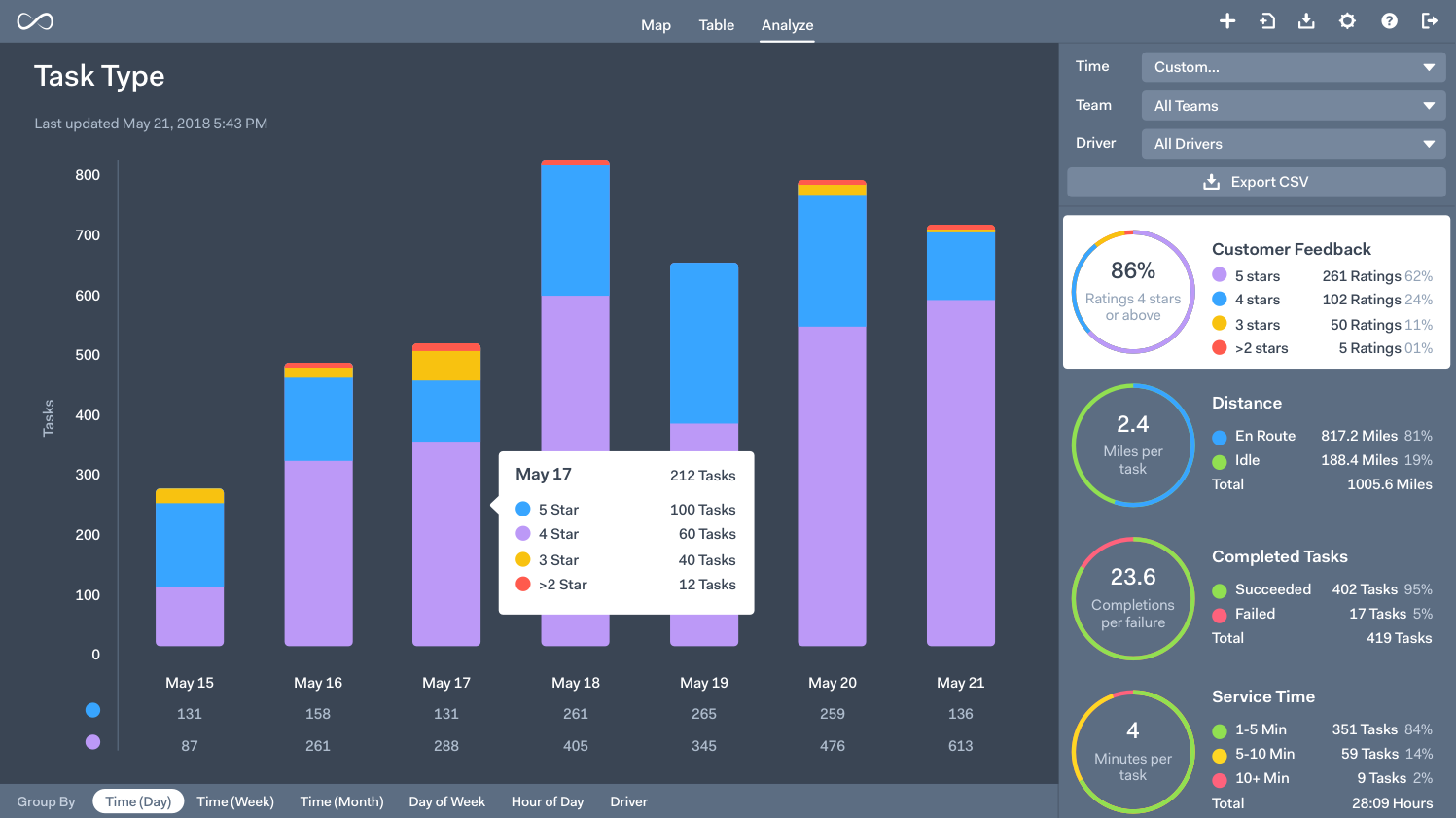
Customer-Facing Benefits of Last-Mile Delivery Tracking
1. Get SMS Alerts When a Delivery is On Its Way
Onfleet’s last mile delivery software lets customers know when their delivery has started, when it should be expected, and when it’s about to arrive with automatic text messages.

2. Communicate Directly With The Driver
Customers can call or message the driver directly from their phone, making it easier to coordinate last-minute details. It also helps drivers avoid missed deliveries by confirming someone will be there to receive the package.
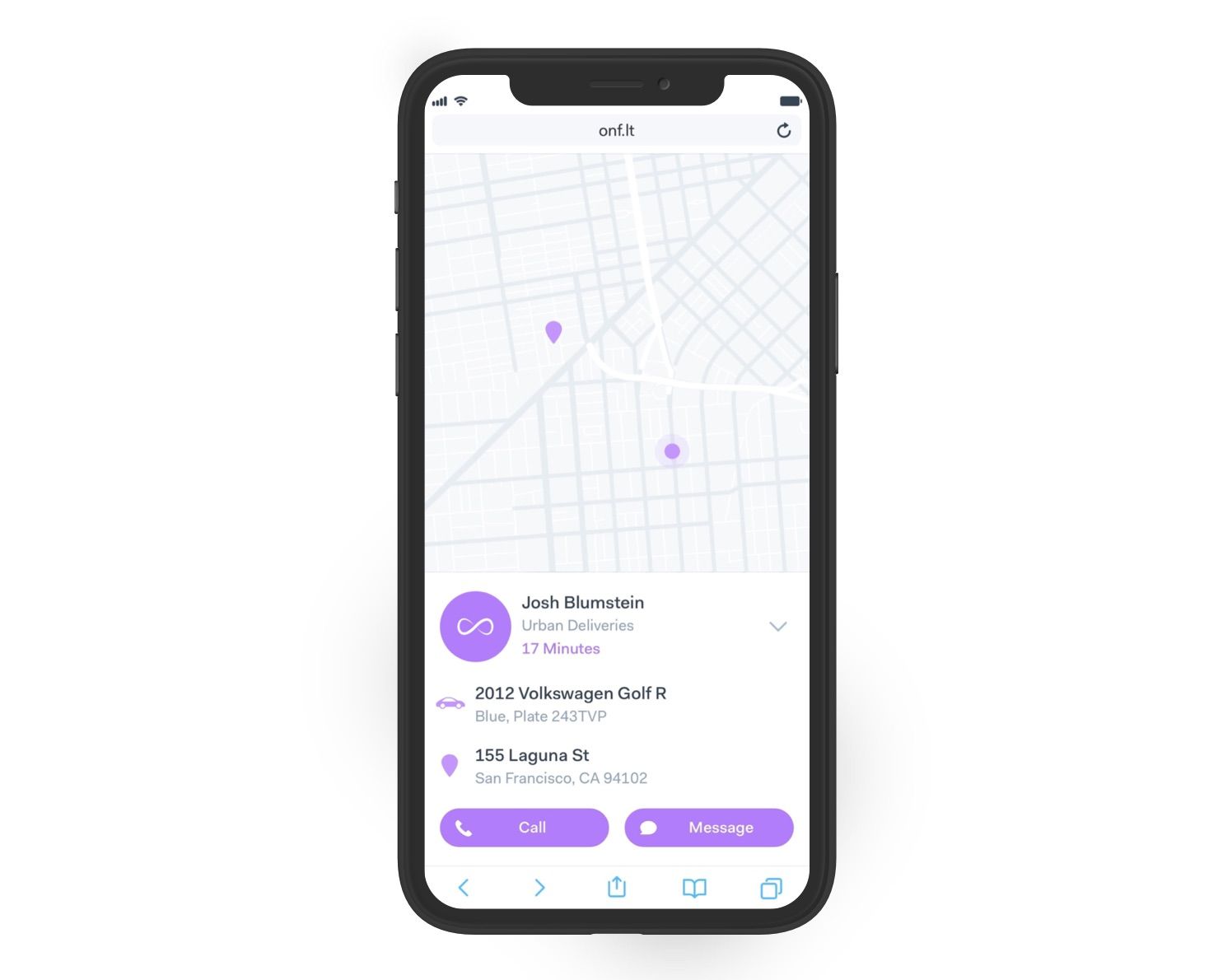
3. Track The Delivery on Their Phone in Real Time
Onfleet’s clean, responsive interface provides customers with live driver location updates, including accurate estimated time of arrival (ETA).
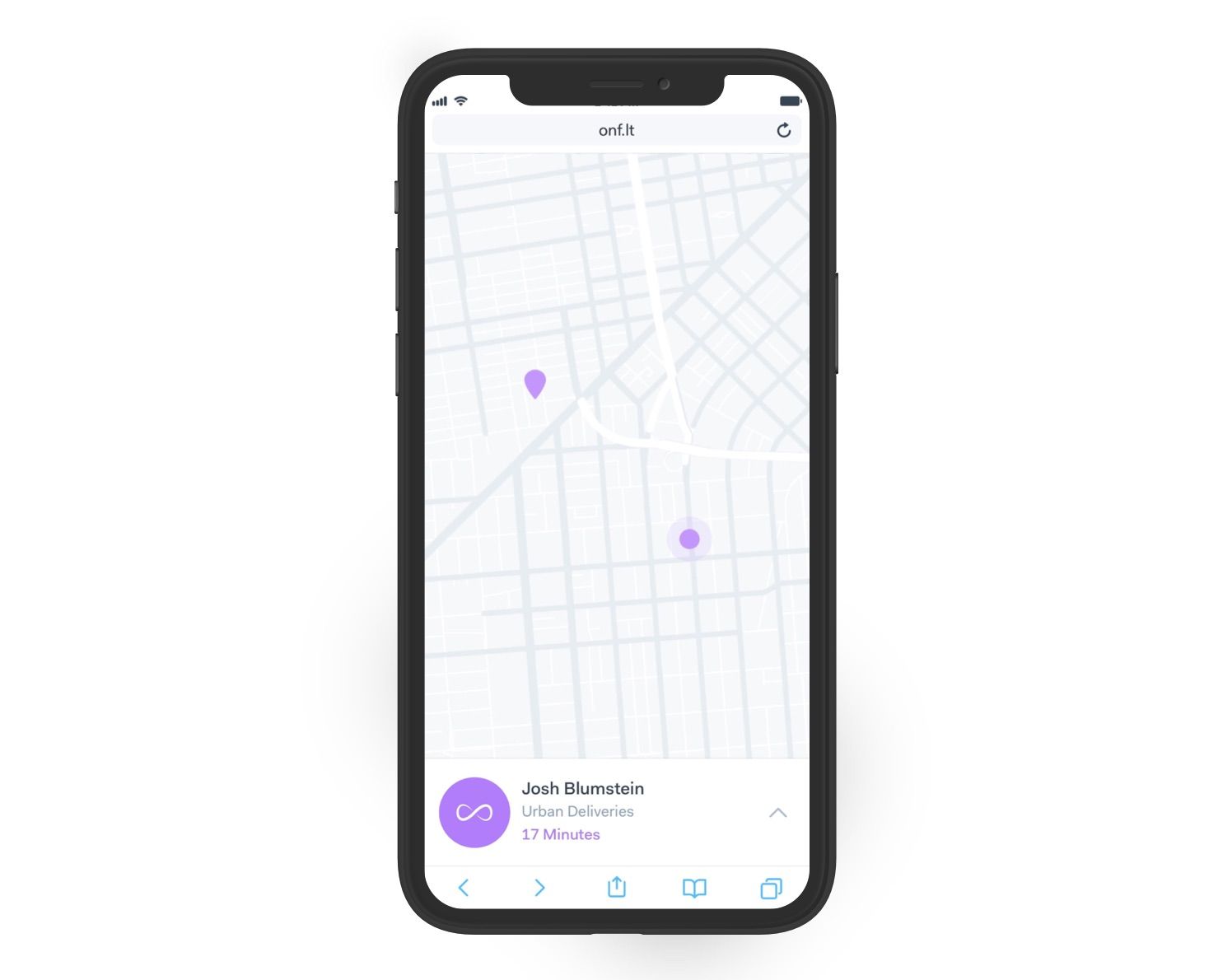
4. Rate The Experience In Seconds
Customers can quickly rate their delivery right from the app, giving them a voice in the process. It’s an easy way to share feedback and feel heard, especially if something didn’t go as expected.
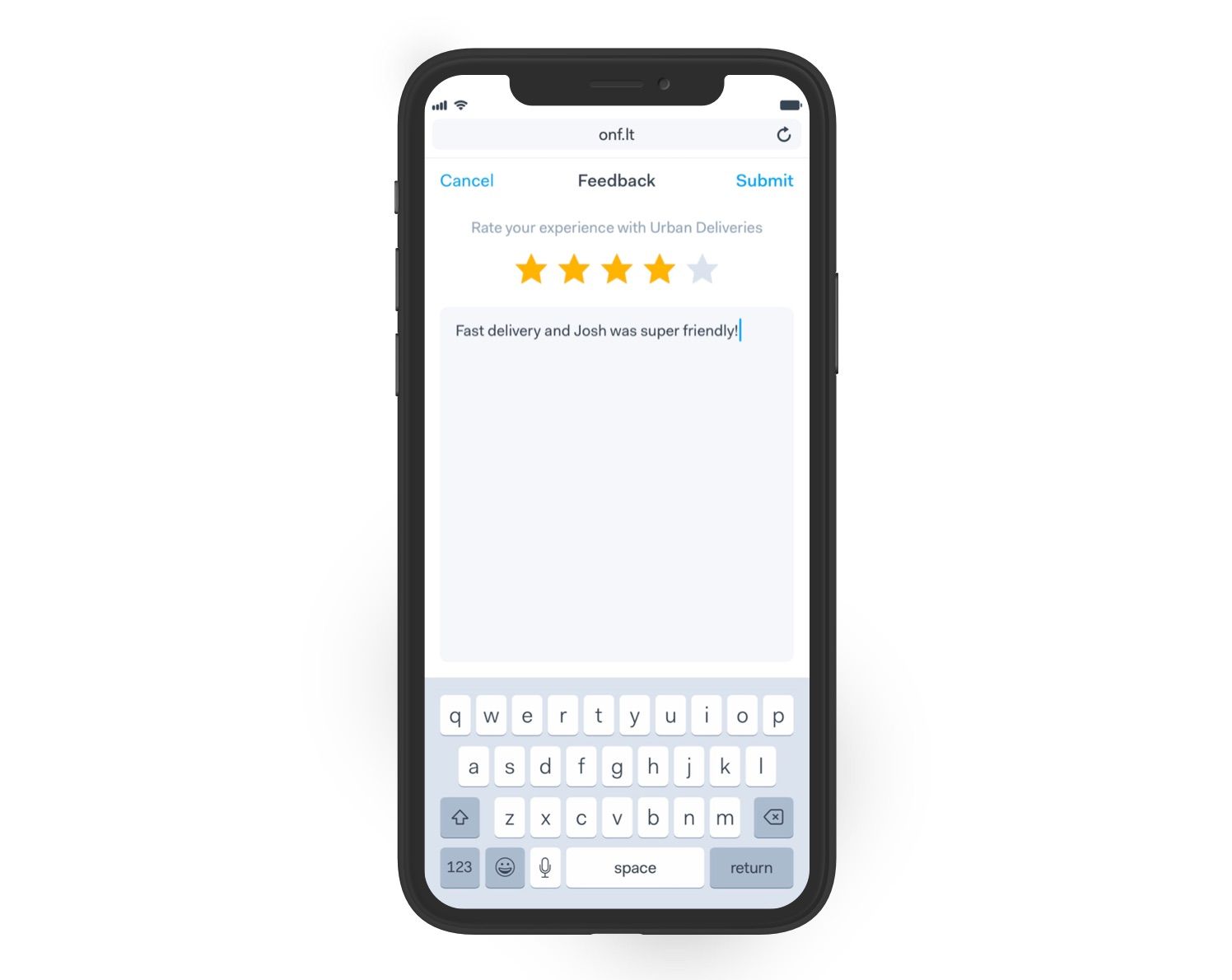
Improve Last-Mile Tracking and Customer Experience with Onfleet
Every delivery is a moment of truth. If your tracking tools fall short, your brand reputation and repeat business are on the line. Onfleet gives you everything you need to track packages in real time, optimize routes with AI, and deliver the kind of experience today’s customers expect.
Built for high-volume, last-mile operations, Onfleet is trusted by top companies across many industries to deliver better outcomes at the doorstep.
Kickstart your Onfleet journey with a 14-day free trial. Get started today.
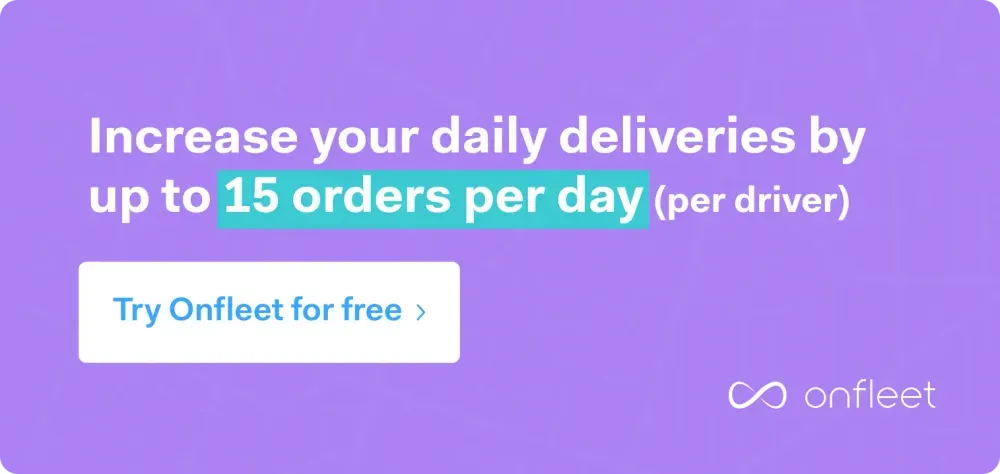
FAQs
What is a Last Mile Carrier?
A last-mile carrier is the delivery service responsible for transporting a package from a local hub or distribution center to its final destination. This is the most complex and costly part of the shipping process, often referred to as the “last mile.”
Common last-mile carriers include FedEx, UPS, and USPS, as well as regional courier companies that specialize in same-day or local deliveries.
Why is last-mile tracking important in 2025?
With 84% of customers unlikely to return after a single poor delivery experience, real-time visibility is now critical. Last-mile tracking improves customer satisfaction, reduces failed deliveries, and helps businesses operate much more efficiently.
How does last-mile tracking improve the customer experience?
Last-mile tracking gives customers live updates, accurate ETAs, and the ability to communicate directly with their driver. With delivery alerts and real-time tracking links, customers feel more in control and informed throughout the process.
What are the main challenges with last-mile visibility?
Common issues with last-mile visibility include fragmented systems, outdated software, lack of real-time data, limited communication options, and inconsistent proof of delivery. These problems can lead to delivery errors and support overload, among others.
What features should I look for in last-mile delivery tracking software?
Prioritize last-mile delivery tracking software that offer: real-time driver and vehicle tracking, predictive ETAs and customer SMS/email notifications, digital proof of delivery (photos, barcodes, signatures), route optimization, mobile-friendly driver app, analytics and reporting tools, and easy integrations with your tech stack.
How does Onfleet help with last-mile delivery tracking?
Onfleet is a HIPAA-compliant, last-mile delivery software that offers live tracking, customer notifications, route optimization, proof of delivery, and robust analytics. It’s trusted by thousands of companies to manage last-mile operations efficiently and at scale.
Can I try Onfleet before committing?
Yes, you can try Onfleet before committing. Onfleet offers a 14 day free trial so you can test its real-time tracking, customer communication, and delivery management tools before committing to a plan.
